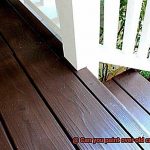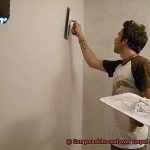Are you bored with the same old color on your Gorilla Glue projects? Want to add some pizzazz to your creations? Then you might be wondering if it’s possible to spray paint over Gorilla Glue.
The answer is not a simple yes or no. There are several factors you need to consider before picking up that spray can. Gorilla Glue is a versatile adhesive that bonds quickly and dries clear, making it a popular choice for DIYers. But its unique chemical composition can make it tricky to paint over.
In this blog post, we’ll delve into the compatibility of Gorilla Glue and spray paint. We’ll discuss the type of spray paint that works best with Gorilla Glue and what preparation is needed before painting. Plus, we’ll share some tips and tricks to ensure your spray-painted Gorilla Glue project comes out looking fabulous.
Whether you’re an experienced DIY enthusiast or just starting out, this post is for you. So grab a cup of coffee, get comfortable, and let’s explore whether you can spray paint over Gorilla Glue.
Properties of Dried Gorilla Glue
Contents
- 1 Properties of Dried Gorilla Glue
- 2 Preparation for Spray Painting over Gorilla Glue
- 3 Benefits of Using a Primer
- 4 Tips for Applying Paint over Gorilla Glue
- 5 Potential Problems with Spray Painting over Gorilla Glue
- 6 Considerations When Choosing a Paint Type
- 7 How to Achieve the Best Results When Spray Painting Over Gorilla Glue
- 8 Conclusion
Gorilla Glue is a versatile adhesive that has gained popularity for its robust bonding capabilities and water-resistant properties. However, when it comes to spray painting over Gorilla Glue, there are specific properties of the dried glue that require consideration.
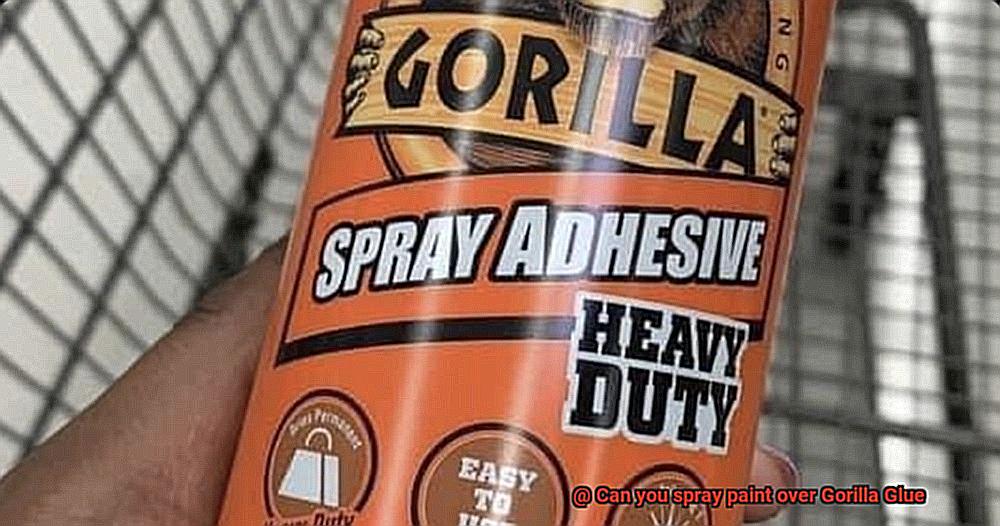
One essential factor to take into account is the texture of dried Gorilla Glue. The glue can create a rough and porous surface, which can negatively impact the appearance of the final paint job. To achieve a smooth and even finish, it’s crucial to sand down any rough areas before starting spray painting.
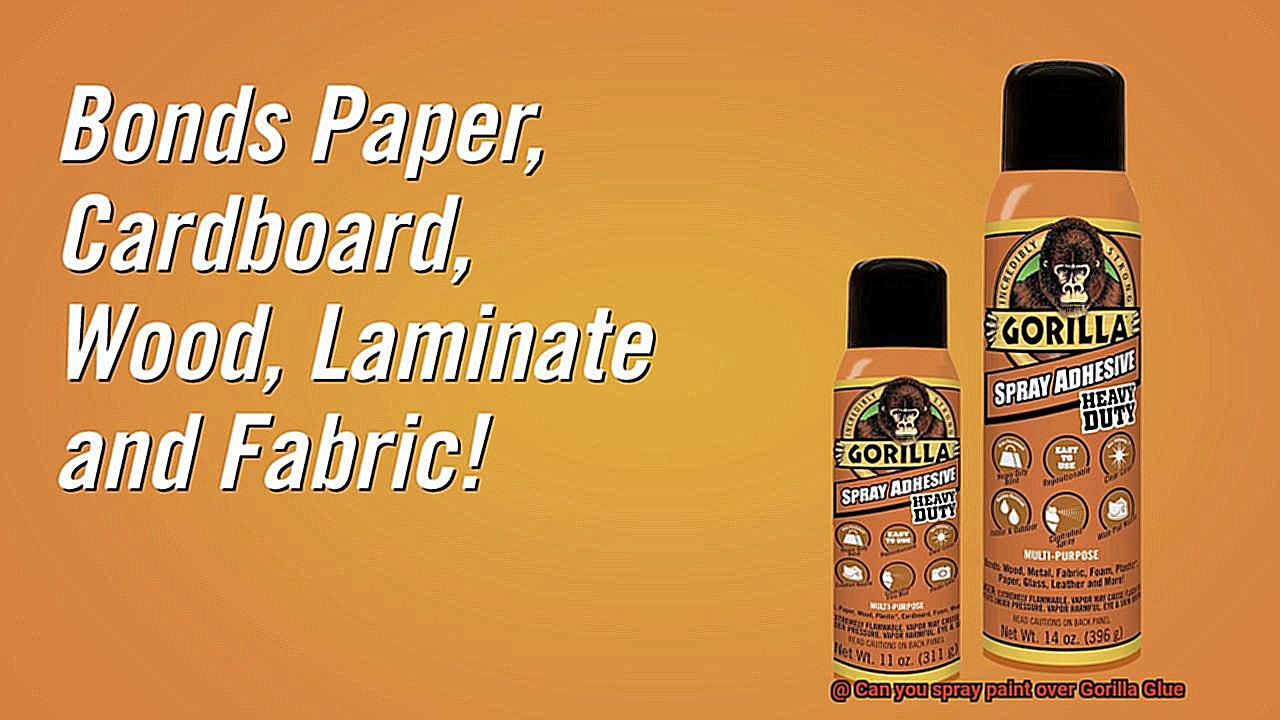
Another key aspect to consider is the expansion of Gorilla Glue as it dries. This means that any excess glue that wasn’t removed during application may create uneven surfaces or bumps that will be visible after spray painting. To prevent this from happening, it’s vital to ensure that any excess glue is wiped away before painting to create a clean and even surface.
It’s also important to note that Gorilla Glue dries to a hard and rigid finish, making it an excellent choice for durable bonding. However, this property may not be suitable for projects that require flexibility. If you’re using Gorilla Glue on a surface that will experience movement or bending, you may need to explore alternative adhesives.
To achieve a successful spray paint application over Gorilla Glue, using a primer is highly recommended. A primer can help create a smooth and even surface for the paint to adhere to while preventing any reaction between the glue and paint that could cause bubbling or cracking.
Preparation for Spray Painting over Gorilla Glue
As an expert in preparation for spray painting over Gorilla Glue, I’m here to share with you the essential steps for achieving a flawless result.
To start, allow your Gorilla Glue to dry and cure completely before painting – usually within 24 hours. Once cured, gently sand the surface with fine-grit sandpaper until all rough or raised areas are smoothed out. Don’t forget to wear a mask while sanding to avoid inhaling any dust.
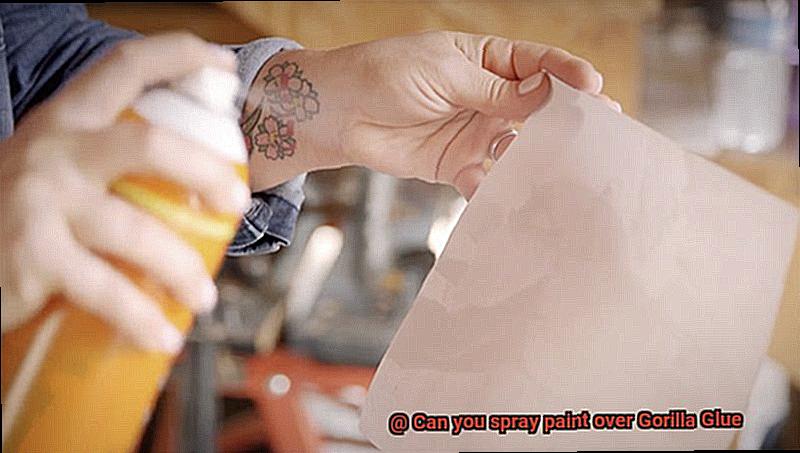
Next, clean the surface thoroughly using mild soap and water to remove any dirt, debris, or oils which may interfere with paint adhesion. Ensure that the surface is completely dry before proceeding to the next step.
If necessary, apply a primer compatible with both Gorilla Glue and your chosen paint type. A primer will improve paint adhesion and provide a more even finish.
Before spray painting over Gorilla Glue, protect surrounding areas from overspray using masking tape and newspaper or plastic sheeting. Remember to work in a well-ventilated area and wear appropriate safety equipment such as goggles and a respirator mask.
Benefits of Using a Primer
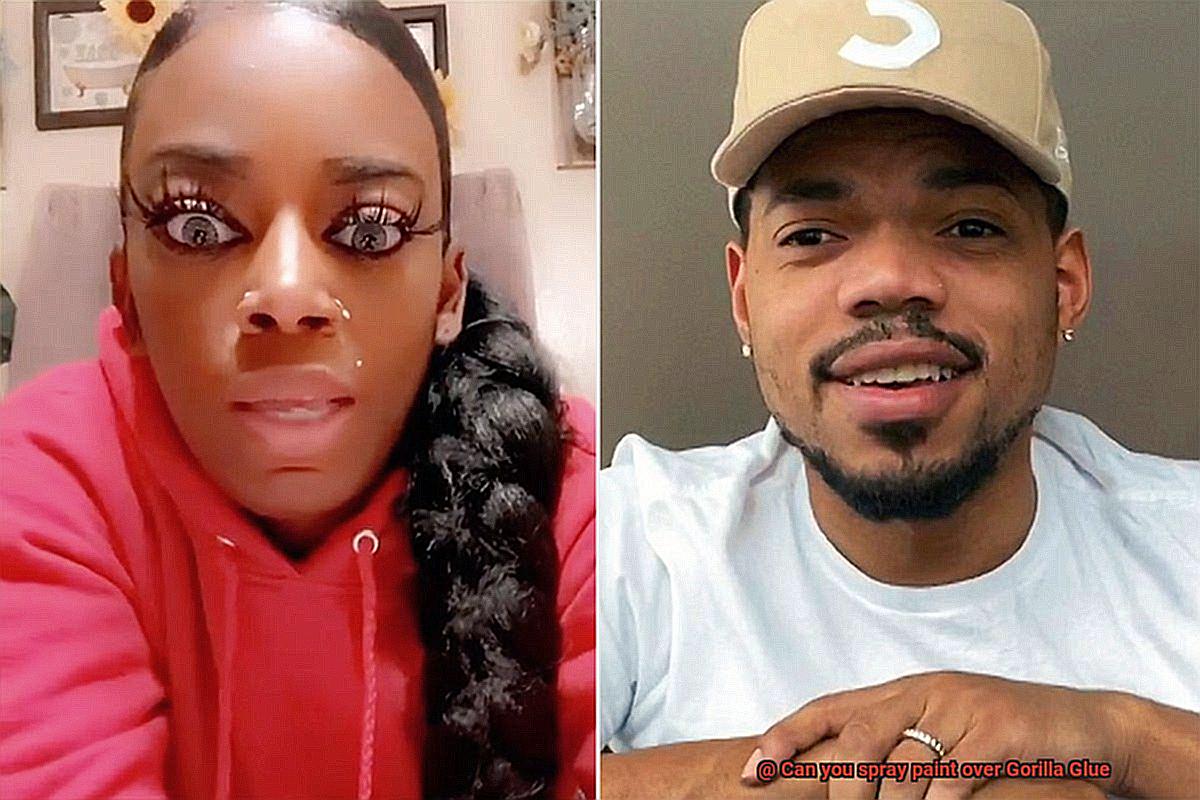
If you’re planning on painting over Gorilla Glue, listen up. Using a primer before applying your paint can make a world of difference. Here are some of the key benefits of using a primer:
Firstly, primers seal porous surfaces and prevent them from absorbing too much paint. Gorilla Glue creates a strong bond but can leave behind a rough, textured surface that’s difficult to paint over. A primer fills in any gaps or holes, creating a smooth canvas for the paint to adhere to.

Secondly, primers provide better adhesion for the paint. Gorilla Glue is an incredibly powerful adhesive that can make the surface too slick for paint to stick properly. By applying a primer, you create a more receptive surface for the paint, which means it will adhere better and last longer.
Thirdly, primers help you achieve a more uniform finish. When painting over Gorilla Glue, there may be areas where the glue has been applied thicker than others, creating an uneven surface. Primers help even out these inconsistencies and provide a consistent base coat for the paint.
Tips for Applying Paint over Gorilla Glue
If you’re a fan of using Gorilla Glue in your DIY projects and want to paint over it, there are a few critical steps to keep in mind. First and foremost, it’s essential to wait until the glue is completely dry before attempting to apply any paint. Rushing this step could cause the paint to adhere poorly and result in an uneven finish.
Once the glue has dried, it’s crucial to sand the surface lightly with fine-grit sandpaper. This will create a smooth base for the paint to adhere to and remove any bumps or irregularities. It’s also necessary to wipe away any dust or debris from the surface with a clean cloth before moving on to painting.
When selecting a paint for use over Gorilla Glue, it’s best to choose a type that is compatible with the glue’s properties. Acrylic and latex paints are typically safe choices, while oil-based paints may not bond well with the glue and could result in peeling or cracking over time.
To ensure an even and long-lasting finish, it’s recommended to apply a primer specifically designed for use on glued surfaces before applying any paint. This will help create an even base for the paint to adhere to and can also help prevent any potential reaction between the paint and glue.
When applying the paint, it’s important to use thin layers and allow each layer to fully dry before adding additional coats. This will help prevent drips or pooling of the paint, which can create an uneven finish. It may also be helpful to use a high-quality brush or spray gun for application.
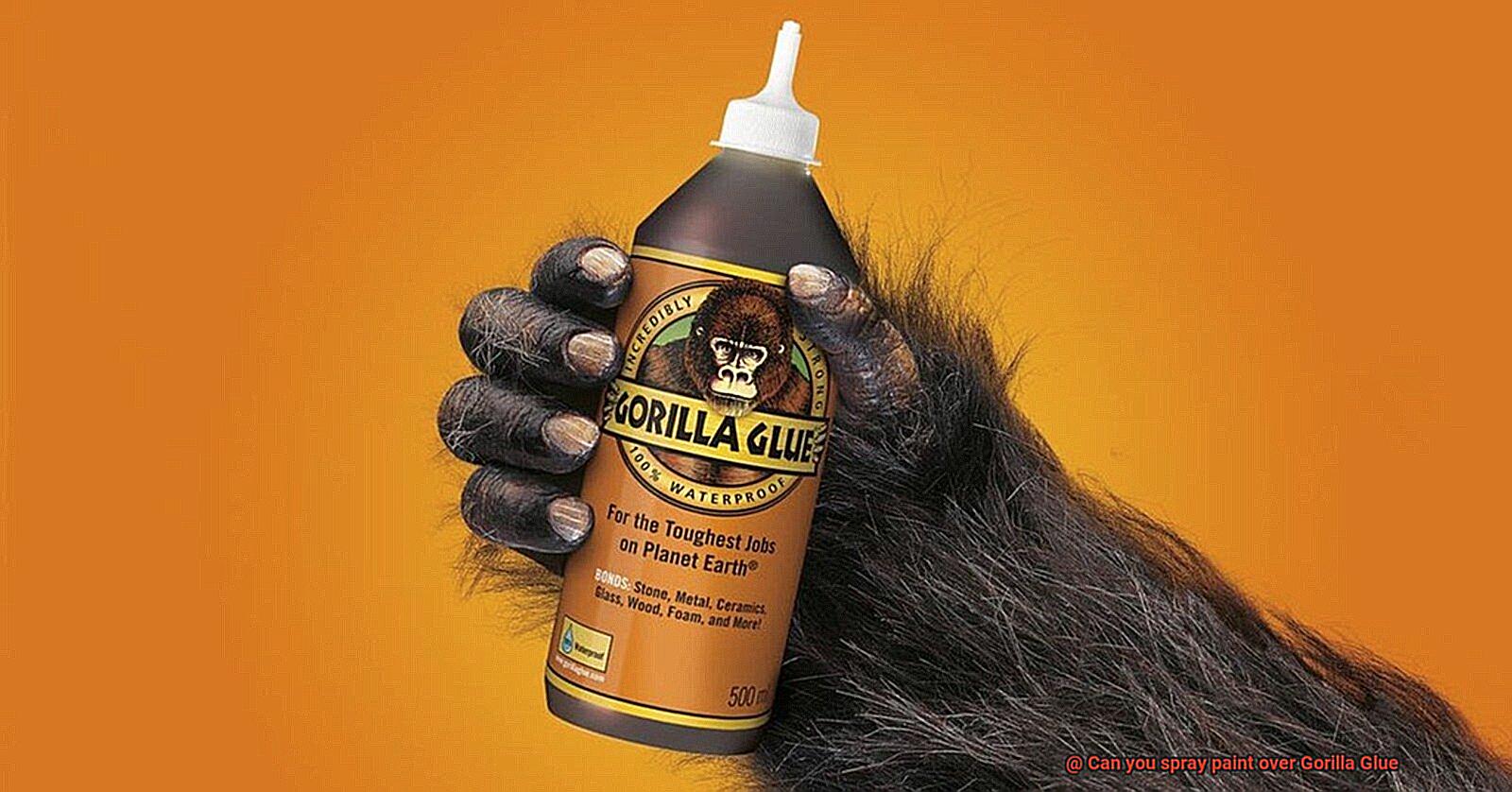
Potential Problems with Spray Painting over Gorilla Glue
Before you dive into the spray painting process, it’s important to know that there are potential problems that you may encounter. One of the most common issues is that Gorilla Glue can expand as it dries, leading to raised bumps and uneven surfaces on your project. This can make it challenging for the spray paint to adhere properly, resulting in a lumpy and uneven finish.
To avoid this, it’s essential to sand down the surface of your project before spraying. This will create a smooth surface for the paint to adhere to, giving you a better chance at achieving a neat and smooth finish. It’s also important to note that Gorilla Glue is known for its strong hold, which can create a rough and textured surface that’s difficult to paint over. To achieve a flawless finish, consider using a primer specifically designed for use with Gorilla Glue. This will help create an even surface that is easier to paint over and prevent any reactions between the glue and paint.
In addition, some types of spray paint contain solvents that can dissolve or weaken certain types of glue, including Gorilla Glue. This can lead to a weaker hold or even cause the glue to break down entirely. To avoid this, choose a spray paint that is compatible with Gorilla Glue or consider using a different type of adhesive altogether. For instance, low-tack adhesives such as masking tape or painter’s tape may be more suitable for creating clean lines and edges.
Considerations When Choosing a Paint Type
Before you start, it’s essential to consider the type of paint you’ll be using. Every paint is unique, and some may not adhere well to the glue or even cause it to break down or dissolve. Here are some critical factors to consider when choosing a paint type for spraying over Gorilla Glue.
Firstly, the type of base that the paint uses is a crucial factor in ensuring proper adhesion. Oil-based paints tend to have stronger adhesion properties than water-based paints. However, oil-based paints take longer to dry and can be more challenging to clean up. On the other hand, water-based paints dry quickly and are easier to clean up, but they may not adhere as well to the glue.
Secondly, the finish of the paint can also affect the overall appearance of your project. Glossy finishes reflect more light and can highlight imperfections in the surface. In contrast, matte finishes absorb more light and can help to hide imperfections. If you’re looking for a balance between gloss and matte finishes, satin finishes are perfect for furniture and other decorative items.
Thirdly, it’s essential to consider the specific surface that you’ll be painting over. Gorilla Glue expands when cured, creating uneven surfaces that may cause rough textures when painted over. Therefore, some surfaces may require a primer or sealer before painting to ensure proper adhesion and prevent any reactions with the glue.
Finally, it’s crucial to read the manufacturer’s instructions for both the glue and paint to ensure compatibility and avoid any potential issues.
How to Achieve the Best Results When Spray Painting Over Gorilla Glue
Achieving a seamless finish when spray painting over Gorilla Glue requires careful attention to detail and preparation. Here are five sub-sections that will guide you through the process of achieving the best results:
Let the Gorilla Glue dry completely:
The first and most crucial step is to ensure that the Gorilla Glue has completely cured. If the glue is still wet or tacky, the paint will not adhere properly and may even cause the glue to bubble or peel. Allow at least 24 hours for the glue to dry completely before attempting to spray paint over it.
Prepare the surface properly:
Before spray painting, cleaning the surface with a mild soap and water solution and allowing it to dry completely is essential. Sanding the surface lightly can also help create a rougher texture for the spray paint to adhere to. Be sure to wipe away any dust or debris with a clean cloth before proceeding.
Choose the right type of spray paint:
Selecting a high-quality spray paint that is specifically formulated for use on plastics or non-porous surfaces is crucial. This will help ensure that the paint adheres properly and provides a smooth and even finish. It’s essential to choose a spray paint that is compatible with the type of Gorilla Glue used.
Apply the spray paint carefully:
When applying the spray paint, it’s essential to hold the can at a consistent distance from the surface and move in even strokes. Applying several thin coats of paint rather than one thick coat will prevent drips and ensure an even finish. Follow the manufacturer’s instructions carefully when applying the spray paint, as this can vary depending on the product.
Protect the finish:
After allowing the spray paint to dry completely, consider applying a clear coat of sealant or varnish over the top to protect the finish and ensure longevity. This will help prevent scratches, chips, and other forms of damage.
nBNu6S9Ap24″ >
Conclusion
In conclusion, the question of whether or not you can spray paint over Gorilla Glue is not a simple “yes” or “no.” It requires careful consideration of several factors before proceeding with your project. The rough and porous texture of Gorilla Glue, combined with its tendency to expand as it dries, can make painting over it a tricky task. However, with proper preparation and the right type of spray paint, you can achieve a flawless finish that will last.
To ensure success when painting over Gorilla Glue, we highly recommend using a primer that is compatible with both the glue and your chosen paint type. A good primer will create an even surface for the paint to adhere to while preventing any negative reactions between the glue and paint that could cause bubbling or cracking.
Follow these essential steps to achieve the best results when spray painting over Gorilla Glue: allow the glue to dry completely, prepare the surface properly, choose the right type of spray paint for your project, apply the spray paint carefully and evenly, and protect your finished product.
By taking these precautions and following our expert tips and tricks, you can add some serious flair to your Gorilla Glue projects without sacrificing their durability or water-resistant properties.



